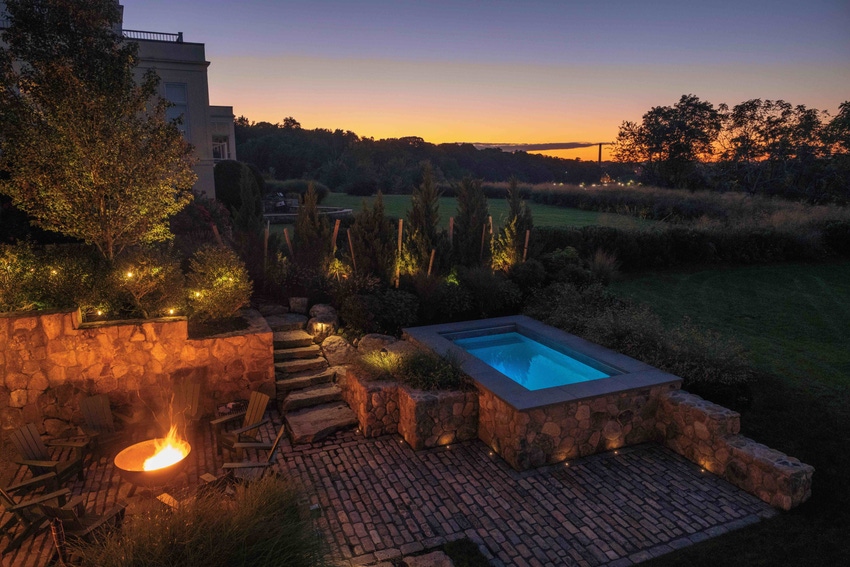As single-family lots shrink, these smaller pools offer dramatic focal points that can fit into just about any backyard while complementing other amenities such as firepits and outdoor kitchens.
September 6, 2022

Since the late 1970s, average single-family home lot sizes have shrunk dramatically from 18,760 square feet in 1978 to a record low of 13,896 square feet in 2020.
“Newer homes tend to have smaller lot sizes. In Nevada, the typical lot is just 7,405 square feet, the smallest of any state. Some 34.6% of homes in Nevada were built in 2000 or later, the largest share of any state,” according to Angi’s 2022 U.S. Lot Size Index.
For pool and spa pros, smaller lots can mean fewer homeowners who have room—let alone the budget—for the pool and spa backyard getaway of their dreams.
But there’s another way to bring in a pool to even the smallest of backyards and enhance hardscapes that’s been steadily gaining in popularity—plunge pools.
As the name suggests, plunge pools are sort of mini swimming pools designed to provide a quick plunge or soak rather than a full-fledged swim. Inspired by Roman baths, they range in size from about 7 feet to 13 feet long and 5 feet to 7 feet wide and can be square or rectangle.
Sometimes called “cocktail pools,” they come in concrete, vinyl and fiberglass configurations and may be inground or aboveground. Unlike hot tubs, plunge pools don’t have jets, but the small pools can easily be heated to hot-tub-like temperatures for warm water soaking. Add a cover, and they can be used year-round.
Whatever their size or configuration, plunge pools offer outsized backyard drama, often for a fraction of the cost of a regular-sized pool, which may also account for their growing popularity.
“An elegant compromise between a yard-usurping swimming pool and a Nemo-themed kiddies’ inflatable, the plunge pool has surged in popularity. According to Heather Goerzen, managing editor of design content for online interiors service Havenly, plunge pools became an ‘it’ project during COVID, rivaling home-baked sourdough,” raved a recent piece in The Wall Street Journal.
Though the media is just catching on to plunge pools, homeowners have been creating demand for a while now. “We’ve been doing this for over eight years and have seen steady upward growth since 2014,�” said Karen Larson, cofounder of Soake Pools. “The American public is really ready to embrace the small pool trend.”
Larson added that more and more plunge pool players are entering the market and her sales are already up 50% year over year from 2021. “Last year was a record-breaking year, and this year is even higher,” she said.
Soake Pools offers one of the more high-end versions of plunge pools. The precast models come pre-plumbed and pre-tiled and start at $28,000, not including the heater or delivery costs. “Because it’s already tiled on the inside, installers can literally have it plumbed and finished up in a few days,” Larson said.
Although Soake Pools and other plunge pool manufacturers sell directly to consumers, they also form partnerships with pool and spa businesses. For example, Soake Pools partners with Rock Water Farm, a landscaping, design/build and service firm in Virginia.
For pool and spa pros, plunge pools can be a good way to add a new backyard offering that’s relatively quick and easy to install. The pools also provide them with a new way to sell the whole backyard concept to customers, especially those with less room to play with.
“If a homeowner is creating an outdoor living space and being thoughtful about it, they’re realizing they can use less space and still get the same enjoyment,” Larson said. “You can fit one of these in any tiny courtyard and they really serve as a focal gathering point. They also lend themselves nice to other backyard features such as outdoor rooms, kitchens and firepits.”
About the Author(s)
You May Also Like




